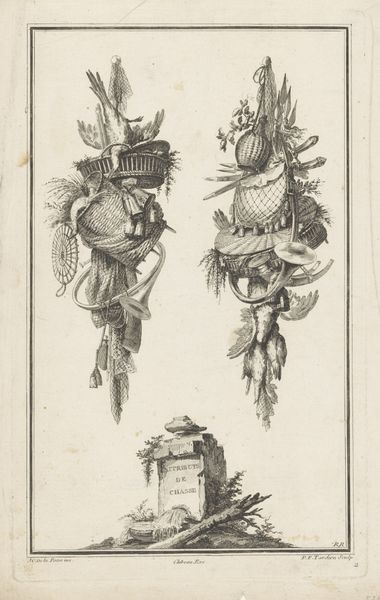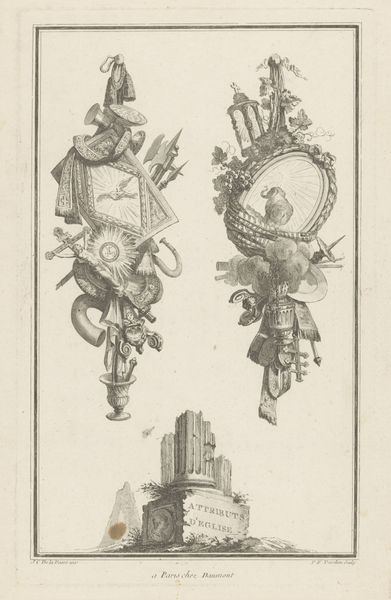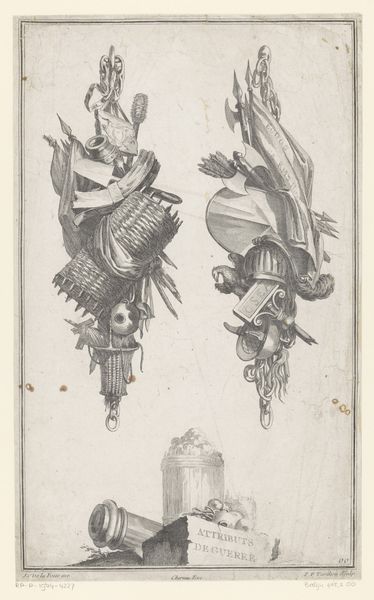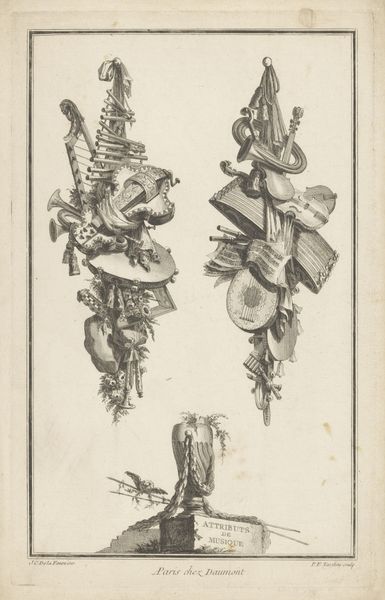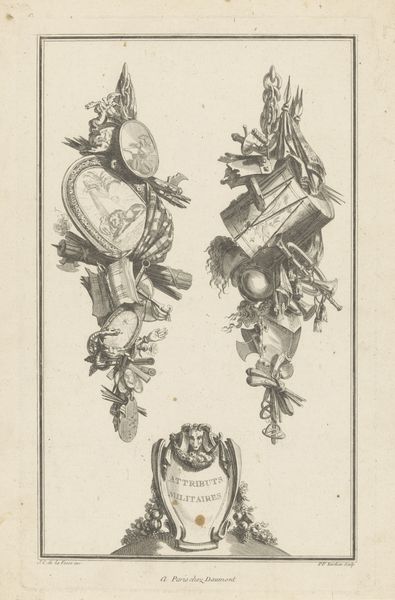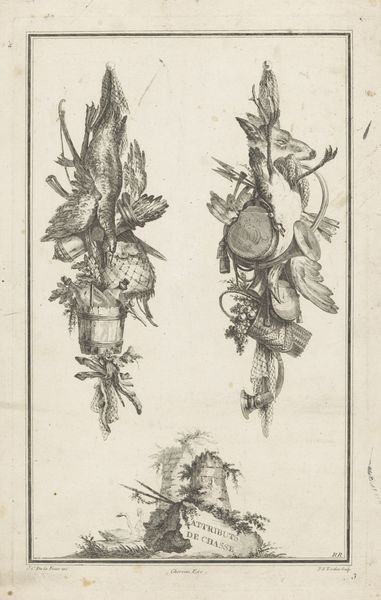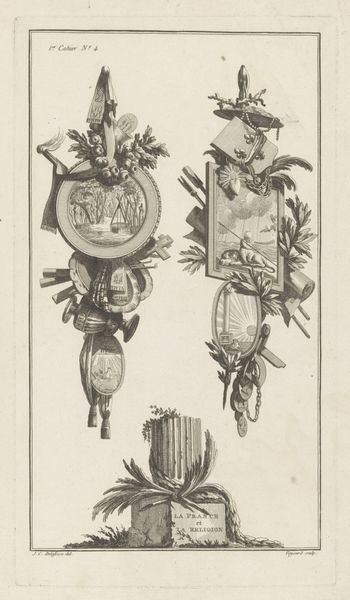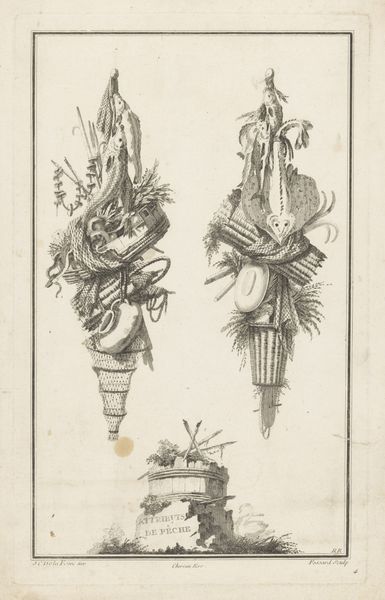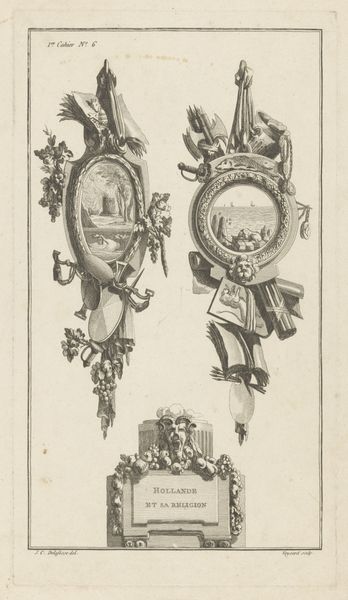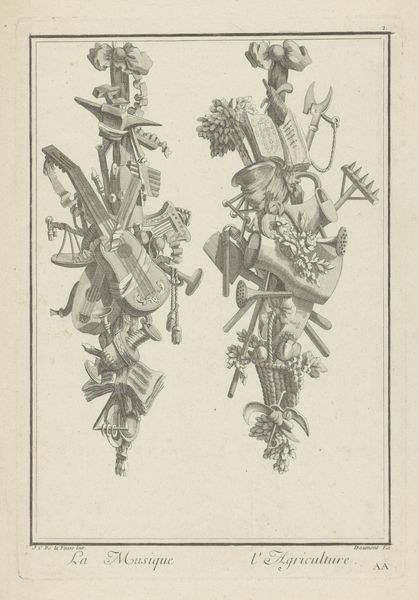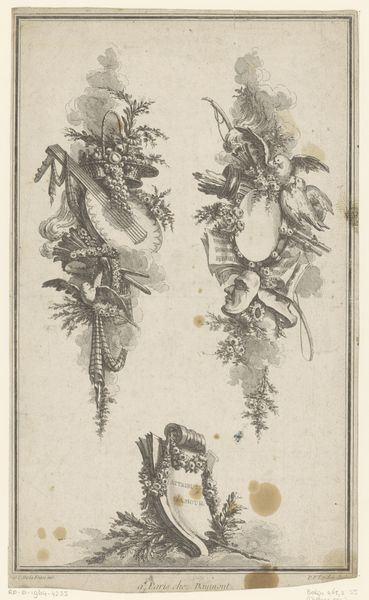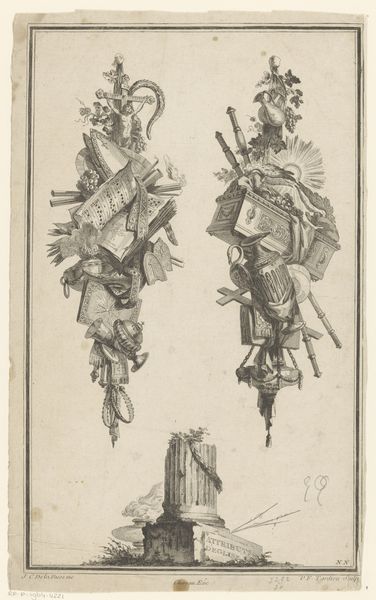
Dimensions: height 382 mm, width 240 mm
Copyright: Rijks Museum: Open Domain
Curator: Immediately, the intricate detail is captivating. The almost clinical precision lends it a serious air, but there's a fragility too, isn’t there? Editor: Indeed. This is "Trofeeën met schilden," trophies with shields, an engraving by Pierre François Tardieu, made after 1771. We have it here at the Rijksmuseum. It presents two elaborate trophy arrangements hanging above what appears to be a broken altar. Curator: Ah, ‘trophies’! Suddenly the symbolism makes me think of how the church would portray itself after battles, of subjugation and domination disguised in iconography. Are those symbols religious or academic? Editor: We see various religious attributes intermingled with items representative of secular pursuits. The shields in the center of each, with radiating light, appear almost like monstrances. But alongside are open books, musical instruments. And the broken altar with "Attributs d'Eglise" suggests a commentary on the state, maybe even the fallibility, of the Church. Curator: The composition also creates a visual hierarchy—the trophies are glorified above a broken altar, perhaps a criticism on the elevation of worldly attributes above genuine religious belief. Was Tardieu implying the institution was becoming performative and empty? Editor: The time period supports that. Late 18th century, just before the French Revolution… Discontent with the Church and aristocracy was rampant. Consider that visual language often spoke louder than words at the time, hinting at the politics. The sharpness of the engraved lines reinforces the precision and authority claimed by those in power, ironically critiquing that very power. Curator: So the medium is itself implicated. I see so much history here, not just in the subject matter but in the context of the work itself. The broken altar hints at a world ripe for revolution. Editor: Absolutely, considering this engraving now enriches our understanding of societal dynamics and power structures prevalent at the time it was made. Curator: An interesting piece of social critique—it asks pertinent questions that encourage you to reassess societal norms even now.
Comments
No comments
Be the first to comment and join the conversation on the ultimate creative platform.
